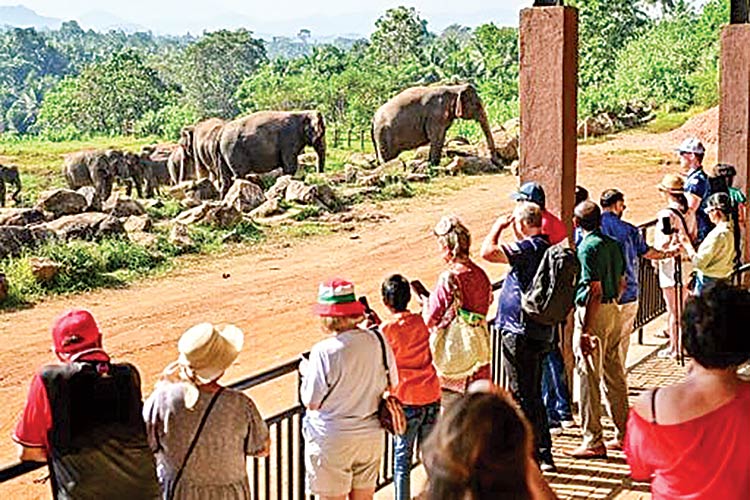Life style
Banana: the everyday super fruit
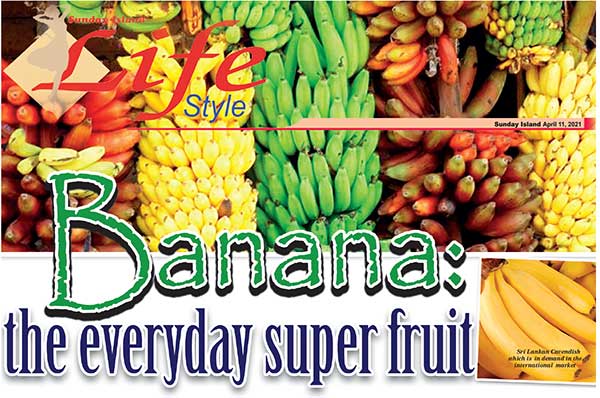
by Randima Attygalle
Be it visiting loved ones for the new year or on any other occasion, taking a comb of bananas along is a time-honoured practice among Lankans. We are not alone in our love for this delectable fruit relished over centuries by mankind and herbivorous animals alike. One of the most widely grown fruit crops in the world, banana occupies a top place in the fresh fruit trade, second only to orange. Banana (Musa spp.) is native to South Asia and Western Pacific Region. The wild ancestors of cultivated banana Musa acuminate Colla and Musa balbisiana Colla are distributed in South and South East Asian countries including Sri Lanka.
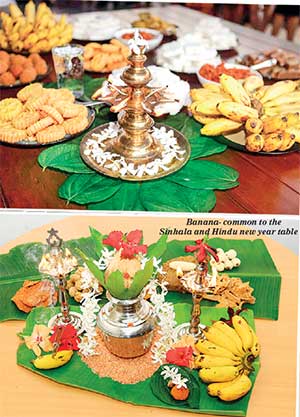 The earliest written reference to bananas in Sri Lankan history goes back to about 341 A.D. the time of King Buddhadasa who is reputed to have been a skilled physician. The king had recorded in his Sarartha Sangragaha, the medicinal values of various parts of the banana plant. There is also evidence that the prehistoric inhabitants of the island, over 12,000 years ago had eaten wild bananas. The seed remains of ati-eta kesel which had been found in a carbonized state in the stone-age cave sites of Batadombalena in the Ratnapura District prove the long existence of banana in Sri Lanka.
The earliest written reference to bananas in Sri Lankan history goes back to about 341 A.D. the time of King Buddhadasa who is reputed to have been a skilled physician. The king had recorded in his Sarartha Sangragaha, the medicinal values of various parts of the banana plant. There is also evidence that the prehistoric inhabitants of the island, over 12,000 years ago had eaten wild bananas. The seed remains of ati-eta kesel which had been found in a carbonized state in the stone-age cave sites of Batadombalena in the Ratnapura District prove the long existence of banana in Sri Lanka.
“Botanically known to be a kind of berry, banana is the only fruit crop equally recognized as a fruit and a vegetable. Although ‘bananas’ and ‘plantains’ are commonly used to name the fruit, there is a distinction between them. The two major types of edible banana cultivars in the country are classified into banana and plantain each with different morphological characters and uses. “While banana is considered to be the ‘dessert’ type, plantains are the cooking type,” explains Dr. Kalyani Ketipearachchi, former Principal Scientist (Fruit Agronomy), Fruits Crops Research and Development Station of the Department of Agriculture in Gannoruwa, Peradeniya. Today what is known as ‘ornamental banana species’ have also found a place in home gardens, she adds.
While almost 1,000 varieties of bananas are found across the world, there are around 50 varieties locally found, says Dr. Ketipearachchi. Other than a few varieties introduced scientifically through international research projects such as Ambun types, Cavendish type, recommended varieties of Kandula and
Pulathisi, almost all the others are indigenous to the country, she adds.
Sri Lankan bananas are found in three main groups: the Mysore, the Kolikuttu and the Cavendish. Ambul and seeni bananas are of Mysore group. Kolikuttu, suwendel, puwalu and rath kehel belong to the Kolikuttu group, while embun, anamalu, nethrampalam and bim-kesel belong to the Cavendish group. While all these are popular dessert bananas, alu-kesel or ash plantain is a cooking variety. Among the cooking types are Kithala, Mondan, Etamuru, and Marathamana which are however not as common as alu-kesel. Nethrampalam, she says, is the most expensive local variety. “This is not commonly available as it is not yet cultivated on a large scale. Nethrapalam is believed to help improve eyesight and contains aphrodisiac qualities. Bimkesel or Navkesel is also a Cavendish type known as Sri Lankan Cavendish. The tree is of dwarf size and its fruit bunch almost touches the ground.
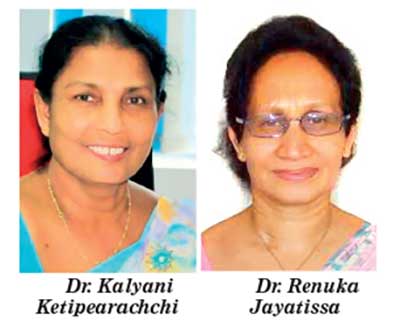 Bananas are a popular fruit crop ensuring high economic returns throughout the year. “This is the fruit’s biggest attraction, as it could be grown across the country even at very high elevations unlike other seasonal fruits such as rambutan or mango. Moreover, banana can be harvested in shorter periods, bearing fruit in about ten months,” notes Dr. Ketipearachchi. The economic life span of a tree is about four years.
Bananas are a popular fruit crop ensuring high economic returns throughout the year. “This is the fruit’s biggest attraction, as it could be grown across the country even at very high elevations unlike other seasonal fruits such as rambutan or mango. Moreover, banana can be harvested in shorter periods, bearing fruit in about ten months,” notes Dr. Ketipearachchi. The economic life span of a tree is about four years.
Nearly 50,000 hectares of land are under banana in Sri Lanka – that’s about 54% of the total fruit cultivation extent, according to the Department of Agriculture. It is also our highest export fruit crop. According to the Export Development Board’s numbers, Cavendish has a high demand in the international market and ambul and rath kesel are also exported in small quantities. Middle East countries are the largest buyers of Lankan bananas, (largely Cavendish) followed by several European countries including Germany, Switzerland, Netherlands and the UK. Japan and New Zealand are also among lead buyers.
Along with its everyday presence in Lankan homes, the fruit is also part of the country’s religious and cultural fabric. All of it, be it leaves, flower bud, pseudo stem or corm, no part of this plant goes unutilized. It is also a popular weaning food for infants as it is easily digestible, soft and palatable. Rice and curry wrapped in banana leaves, popularly known as kesel-kola buth is much relished, giving a special flavour to a meal apart from its packaging function.
Harvard School of Public Health in their literature alludes to banana as the ‘iconic golden fruit’ which carries the title of the ‘first super-food endorsed by the American Medical Association in the early 20th century as a health food for children and a treatment for celiac disease. Rich in potassium, vitamin A and C, banana can easily fulfill the minimum daily fruit requirement of 100gms, says Dr. Renuka Jayatissa, Head of the Department of Nutrition at the Medical Research Institute and President of the Sri Lanka Medical Nutrition Association.
An advocate of ‘a banana a day keeps the doctor away,’ she remarks that banana is a natural intervention for tropical lands like ours to supplement the minerals lost due to heat. “It’s actually a wonder fruit with many advantages – nutrition value, affordability, availability and its natural peel-wrapper, makes it a safe and a practical fruit that could be eaten at any time without interfering with our meal patterns.”
Nearly 50% of Lankan adults have high blood pressure says the Clinical Nutritionist. Rich is potassium, the fruit is  recommended for maintaining blood pressure levels. However, those with potassium-related health issues need to be conscious of how much of the fruit they eat, says Dr. Jayatissa. As it is rich in calories and carbohydrates, it should be eaten in moderation by diabetics and other high risk groups such as the overweight and the obese, to prevent glycemic overloading. “People unnecessarily fear banana which should not be the case. Eating in moderation is the key,” she notes.
recommended for maintaining blood pressure levels. However, those with potassium-related health issues need to be conscious of how much of the fruit they eat, says Dr. Jayatissa. As it is rich in calories and carbohydrates, it should be eaten in moderation by diabetics and other high risk groups such as the overweight and the obese, to prevent glycemic overloading. “People unnecessarily fear banana which should not be the case. Eating in moderation is the key,” she notes.
The nutritional level of different kinds of bananas varies but this is not very significant, so people have the advantage of enjoying their preferred variety, Dr. Jayatissa says. “Ambul has more citric acid, and that’s the reason why it doesn’t agree with those who have citric acid intolerance. But such cases are now not very common. Rath-kesel has more beta-carotenes and is good for those with Vitamin A deficiency. Anamalu is recommended to treat diarrhea as well as constipation,” she explains emphasizing that this fruit can also meet the recommended daily dose of vitamin C as a buffer against COVID-19.
Citing Thailand’s example, she says that the wastage of this wonder fruit must be avoided. “In Thailand, hardly any bananas are thrown away. Overripe fruit is sun-dried and diced into small pieces which they enjoy with ice cream or smoothies. We can learn from this and even add it to our much loved curd. Banana peel soaked in water for three days is a good fertilizer”, Dr Jayatissa says, encouraging Lankans to be more creative with this abundant fruit.
Life style
Sri Lanka’s first elephant orphanage celebrates 50 years
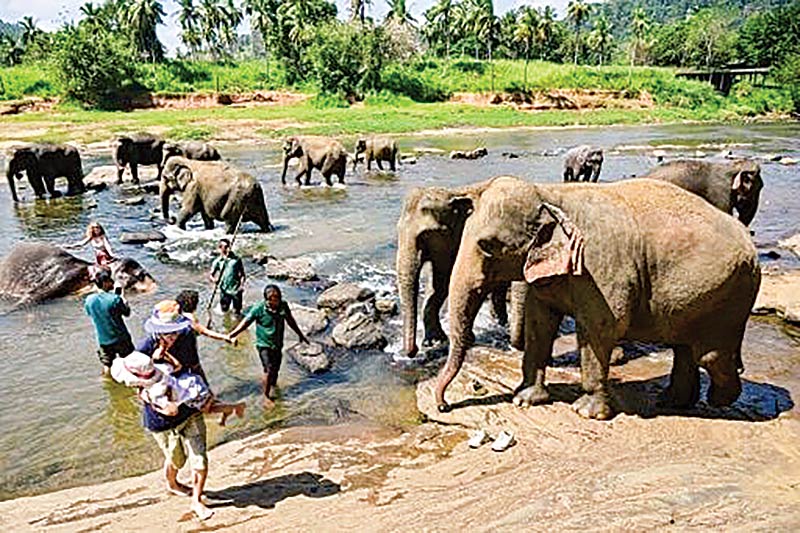
By Amal Jayasinghe
Pics by Ishara Kodikara
Sri Lanka’s main elephant orphanage marked its 50th anniversary on Sunday february 16 with a fruit feast for the 68 jumbos at the showpiece centre, reputedly the world’s first care home for destitute pachyderms. The Pinnawala Elephant Orphanage lavished pineapples, bananas, melons and cucumbers on its residents to celebrate the anniversary of their home, which is a major tourist attraction.
A few officials and tourists invited to the low-key celebration were served milk rice and traditional sweets while four generations of elephants born in captivity frolicked in the nearby Maha Oya river.
“The first birth at this orphanage was in 1984, and since then, there have been a total of 76,” said chief curator Sanjaya Ratnayake, as the elephants returned from their daily river bath.
“This has been a successful breeding programme, and today we have four generations of elephants here, with the youngest 18 months old and the oldest 70 years,” he told AFP.
The orphanage recorded its first twin birth in August 2021 — a rarity among Asian elephants — and both calves are doing well.
Two years before the orphanage was formally established as a government institution in February 1975, five orphaned elephants were cared for at a smaller facility in the southern resort town of Bentota.
“Since the orphanage was set up at Pinnawala in 1975, in a coconut grove, the animals have had more space to roam, with good weather and plenty of food available in the surrounding area,” Ratnayake said.
The home requires 14,500 kilos of coconut and palm tree leaves, along with other foliage, to satisfy the elephants’ voracious appetites.
It also buys tonnes of fruit and milk for the younger calves, who are adored by the foreign and local visitors to the orphanage, located about 90 kilometres (56 miles) east of the capital Colombo.
It is also a major revenue generator for the state, earning millions of dollars a year in entrance fees. Visitors can watch the elephants from a distance or get up close and help scrub them during bath times.
– Tragic toll –
The facility lacked running water and electricity at its inception but things improved as it gained international fame in subsequent years, said retired senior mahout K.G. Sumanabanda, 65.
“I was also fortunate to be present when we had the first birth in captivity,” Sumanabanda told AFP, visiting the home for the jubilee celebrations.
During his career spanning over three decades as a traditional elephant keeper, he trained more than 60 other mahouts and is still consulted by temples and individuals who own domesticated elephants.
Twenty years ago, Sri Lankan authorities opened another elephant home south of the island to care for orphaned, abandoned or injured elephants and later return them back to the wild.
While Pinnawala is seen by many as a success, Sri Lanka is also facing a major human-elephant conflict in areas bordering traditional wildlife sanctuaries.
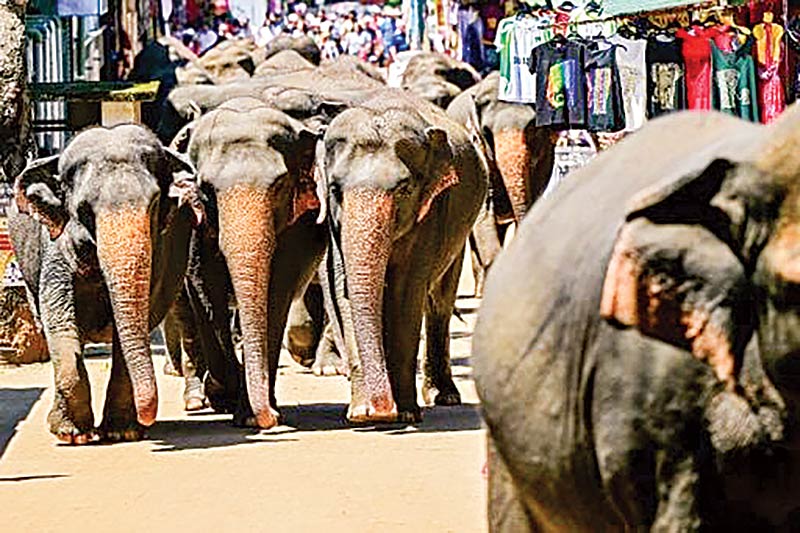
Elephants return to Sri Lanka’s Pinnawala Elephant Orphanage after taking their daily bath in a river
Deputy Minister of Environment Anton Jayakody told AFP on Sunday that 450 elephants and 150 people were killed in clashes in 2023, continuing an alarming trend of fatalities in the human-elephant conflict. The previous year saw 433 elephants and 145 people were killed.
Killing or harming elephants is a criminal offence in Sri Lanka, which has an estimated 7,000 wild elephants and where jumbos are considered a national treasure, partly due to their significance in Buddhist culture.
But the massacre continues as desperate farmers face the brunt of elephants raiding their crops and destroying livelihoods.
The minister was confident the new government could tackle the problem by preventing elephants from crossing into villages.
“We are planning to introduce multiple barriers—these may include electric fences, trenches, or other deterrents—to make it more difficult for wild elephants to stray into villages,” Jayakody told AFP.
Life style
Growing the Cultural Landscape with Suhanya Raffel
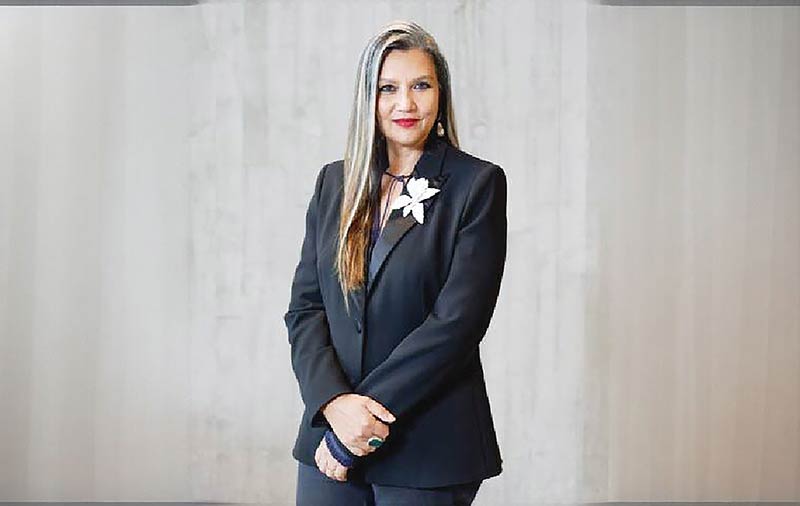
The Geoffrey Bawa Trust which was launched its 2025 is followed by Curatorial Conversations Series. Recently a presentation was made S by M+ Museum director and Geoffrey Bawa Trustee Suhanya Raffel. Speaking at the new Bawa Space on Horton Place, Raffel drew on extensive experience in the museum and art world to present insights and programming from the M+ Museum in Hong Kong. M+ is Asia’s first global museum of contemporary visual culture and presents itself as an intersection of visual art, design and architecture, and the moving image.
The evening presented an opportunity to hear from a leading expert in the museum field and discuss Sri Lanka’s present and future cultural landscape. It also highlighted the role of the Geoffrey Bawa Trust in conserving the legacy of the architect and his collaborators, and promoting contemporary art and design. “There are amazing artists, great designers, and reactive minds in Sri Lanka and the region,” Raffel said at a press event earlier in the afternoon. “There is opportunity in the aspiration to establish things, artists doing very important work, and the energy of individuals to try to make a difference.”
In part, this opportunity stems from the lack of established large-scale infrastructure to conserve Sri Lanka’s modern cultural legacy and support emerging artists. While there is the scope to shape the domestic art world and build institutions reflective of the local cultural community, there are also limitations and challenges in realising this potential.
Raffel spoke extensively about the need to build curatorial skills and knowledge and nurture cultural leaders in the region. Recognising this need, the Geoffrey Bawa Trust maintains public programmes, including exhibitions, residencies, tours, and lectures, to broaden public discourse and knowledge on the built environment and the arts in Sri Lanka and overseas. To fulfil curatorial needs and encourage growth in artistic and cultural institutions such as museums, the Trust employs a dedicated curatorial team and runs a robust internship and training programme. It is hoped that building this skill base will encourage others to explore similar career opportunities and support art, design, and architecture in the region. Sri Lankan visual arts over the past century have enjoyed wide international acclaim. “Sri Lanka is known globally for its creative work,” says Raffel, “it is culturally very strong.”
Geoffrey Bawa is a great example of this global influence. During his lifetime, the architect was very well-known in Sri Lanka and among contemporaries around the world. His structural, landscape, and furniture designs continue to guide and inspire. “It is very important for makers to be seen with their international peers,” Raffel explains. This cultural engagement on regional and international platforms is paramount for ensuring open dialogue and exchange. This means supporting collaborations, encouraging foreign markers to come to Sri Lanka, and exhibiting Sri Lankan work internationally.
The Trust is working to support this global dialogue by hosting installations by artists and makers from Sri Lanka and abroad, as was done in celebration of Geoffrey Bawa’s 100th birthday and again throughout the To Lunuganga programme from 2023-2024. The Trust took Geoffrey Bawa’s work to the world in 2024 with the travelling It is Essential to be There exhibition in Sri Lanka, India, and the United States.
The Trust is proud to be part of major professional international forums such as the International Confederation of Architectural Museums and the Committee for Modern and Contemporary Art Museums, both affiliated with the International Council of Museums. These platforms are vital for global knowledge sharing and advocacy. “We want more of these types of collaborations to happen both with the Geoffrey Bawa Trust, but also other arts and cultural institutions in Sri Lanka,” says Raffel.
In furthering this mission, the Trust is excited to present the new Bawa Space as the organisation’s public face and offer opportunities for the public to engage with the Trust’s work. Located in a recently restored Bawa-designed house from 1959, the Bawa Space doubles as the Geoffrey Bawa Trust headquarters and archives, as well as a new gallery and space for talks and events that will continue year-round.
Life style
Colombo Fashion Week 19-22 February: Two decades of creating the Fashion Eco-system in Sri Lanka

This year CFW will showcase a selection of Emerging Designers alongside established Sri Lankan designers. Adding international flavour will be well known designers from India Suket Dhir, Urvashi Kaur and Zaheer Abbas from Pakistan.
Colombo Fashion Week (CFW), presented by Mastercard, enters its 22nd year in 2025 with its Summer edition, marking another milestone in its journey as one of the four fashion weeks in Asia that have surpassed 2o years.Emerging Designer initiative of CFW this time remains one of its main pillars, providing an entry point for the next generation to pursue design-based entrepreneurship. This in line with the introduction of the Craft Fashion Fund this year is a testament to this commitment. The Craft Fashion Fund will select two winners, one who incorporates batik and another who utilizes crafts other than batik. This initiative passed 20 years.
Over the years, CFW has proven to be the backbone of Sri Lanka’s fashion design industry—its only voice—while creating a fashion ecosystem that provides support to new emerging designers entering the industry. Informally known as South Asian Fashion Week, it serves as a regional hub due to its geopolitical advantage. It is also one of the most significant fashion weeks in South Asia, having played a crucial role in revitalizing the country’s fashion design industry.
This year, Colombo Fashion Week has also expanded its international footprint since joining as a founding member of the newly created BRICS International Fashion Federation. This aligns with CFW’s ongoing mission to bridge diverse fashion markets and foster creative dialogue across continents. As part of this federation, CFW has signed a designer exchange program with BRICS, where a designer from a BRICS country will showcase their work at CFW, and a Sri Lankan designer will present their collection there. CFW continues to play a pivotal role in presenting Sri Lanka through the lenses of arts, culture, and sustainability, further contributing to destination marketing on a global scale.

The Head Table From L to R: Harsha Maduranga, GM – Vision Care, Yatila Wijemanne, Chairman – Juniper, Dr. Vibash Wijeratne, Dirand CEO – Ninewells, Shamara Silva, Mrkt & Media Dir – Unilever, Ruwan Perera, CEO – NDB Wealth, Kamal Munasinghe, Area VP and GM – Cinnamon Grand, Ajai Vir Singh, Founder – CFW, Sandun Hapugoda, Country Mgr – Mastercard, Samrat Datta, GM – Taj Samudra, Bernhard Stefan, MD – Nestlé Lanka, Ramani Fernando, Founder – RF Salons, Arjuna Kumarasinghe, MD -Cargills Food & Beverages
Ajai Vir Singh, Founder, Colombo Fashion Week stated: “Colombo Fashion Week has consistently demonstrated its commitment to developing Sri Lanka’s fashion industry through strategic international partnerships and innovative platforms. Our growing international recognition and expanding designer network reflects vital role this platform plays in positioning Sri Lanka through its creative industries.”
Mastercard, as the presenting partner, continues to champion CFW’s vision of sustainable and inclusive fashion innovation, focusing on digitizing sustainability initiatives and supporting small and medium fashion enterprises.
Sandun Hapugoda, Country Manager, Sri Lanka & Maldives, highlights: “Mastercard is thrilled to partner with Colombo Fashion Week once again, celebrating the incredible talent and creativity within the fashion industry. This partnership aligns perfectly with our commitment to support local artistry. Together, we aim to inspire new possibilities, connect communities, support sustainable fashion initiatives, and elevate the local fashion industry to a global audience, delivering a truly priceless experience. We also anticipate CFW to be a great support to boost the Sri Lanka tourism industry as well.”
The Craft Fashion Fund encourages young designers to engage with and incorporate Sri Lankan crafts into their collections. This approach has been highly successful for designers in other South Asian countries, where traditional crafts have helped establish a unique identity for them. Sri Lankan fashion has its best opportunity to develop a distinct identity when designers integrate local crafts into their work. The developing of this identity has been professed by CFW among the design fraternity, so they are able to create market demand beyond Sri Lanka.
The Emerging Designer initiative of CFW remains one of its main pillars, providing an entry point for the next generation to pursue design-based entrepreneurship. This in line with the introduction of the Craft Fashion Fund this year is a testament to this commitment. The Craft Fashion Fund will select two winners, one who incorporates batik and another who utilizes crafts other than batik. This initiative will support two exceptional designers, ensuring the preservation and evolution of Sri Lanka’s rich artistic heritage. This season, fifteen emerging designers will present their collections, further demonstrating CFW’s dedication to fostering the next generation of fashion talent.
Fazeena Majeed Rajabdeen, Director & CEO, Colombo Fashion Week further added: “Colombo Fashion Week, with its focus on nurturing new talent and emerging designers, has played a pivotal role in reviving and propelling Sri Lanka’s fashion industry. We are proud to present 15 emerging designers this year and to have Sharmila Ruberu mentoring these designers on collection planning. This, along with the Craft Fashion Fund, reiterates our commitment to further the thriving ecosystem we have built, embracing sustainability and empowering young talent.”
Colombo Fashion Week Summer 2025 is set to transform Colombo into an immersive fashion destination by showcasing designers across three of the city’s most prestigious locations. The key partners of Destination Colombo includes Shangri-La, Taj Samudra, and Cinnamon Grand. The shows will feature an impressive roster of international and local talent, including designers from India, Italy and Russia. Renowned creators such as Rimzim Dadu,
Cettina Bucca, Suneet Varma and JJ Valaya, will present alongside celebrated Sri Lankan designers including Fouzul Hameed, Sonali Dharmawardena, Asanka De Mel, Aslam Hussein, Kamil Hewawitharana, Dimuthu Sahabandu, Indi Yapa Abeywardena and Charini Suriyage.
Colombo Fashion Week 2025 is proudly supported by Mastercard, presenting partner along with Shangri-La, Cinnamon Grand, Taj Samudra, NDB Wealth, Yatra, Ninewells Aesthetic Centre, Tresemme, Vaseline, Juniper, Chupa Chups, Nestle-Nescafe, Vision Care, Knuckles, Hameedia, Ramani Fernando, Wijeya Newspapers, Hard Talk, Acorn and Emerging Media.
-

 Features7 days ago
Features7 days agoDon’t betray baiyas who voted you into power for lack of better alternative: a helpful warning to NPP – II
-

 News5 days ago
News5 days agoCommercial High Court orders AASSL to pay Rs 176 mn for unilateral termination of contract
-
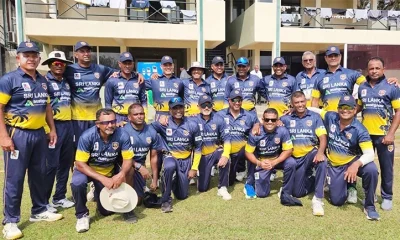
 Sports4 days ago
Sports4 days agoSri Lanka face Australia in Masters World Cup semi-final today
-

 Features7 days ago
Features7 days agoTwo films and comments
-

 Features6 days ago
Features6 days agoUSAID and NGOS under siege
-

 Features6 days ago
Features6 days agoDoing it in the Philippines…
-

 News4 days ago
News4 days agoCourtroom shooting: Police admit serious security lapses
-

 Midweek Review5 days ago
Midweek Review5 days agoImpact of US policy shift on Sri Lanka


